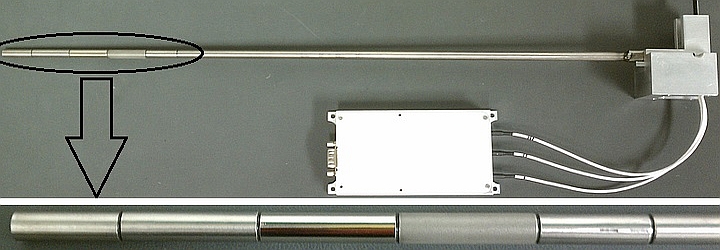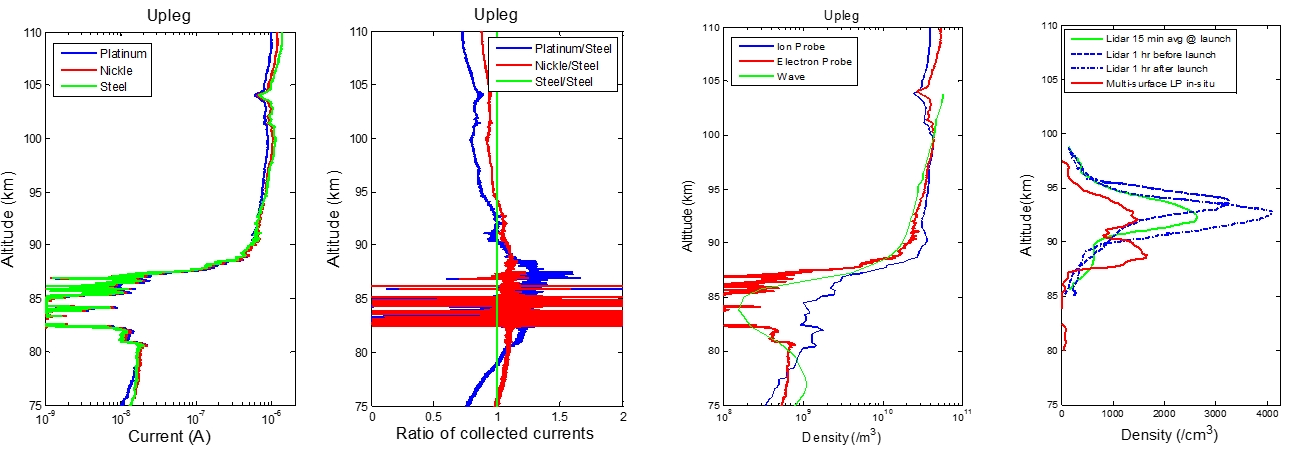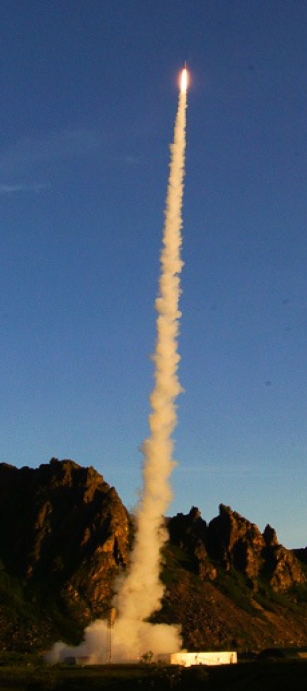The mDCP probe is a unique implementation of Langmuir probe technique that measures the difference in triboelectric current collection by three different metallic surfaces. Charging of metallic surfaces by charge transfer from dust particles, due to differences in work functions or due to frictional contact, is known as triboelectric charging. If two surfaces come merely in contact with each other and then separate, the surface with lower work function loses an electron to the surface with higher work function. This triboelectric current to a surface moving in dusty plasma is in addition to any thermal plasma current. Barjatya and Swenson [2006] have already shown the importance for considering the effects of triboelectrification on the interpretation of Langmuir-type probe datasets in the presence of dusty plasma. The WADIS mDCP probe is shown in the picture below.

Three different surfaces should lead to three different triboelectric currents. The three surfaces were chosen such that we could bin the background neutrals into having four different work function bins. Each probe was biased +3V, and there was a guard @ +3V on each side.
The three surfaces were Nickle (work function 5.1 eV), Platinum (work function 5.9eV), and Steel sensor (work function 4.4 eV). Rapp et al (2012) have shown that most mesospheric smoke particles (MSP) will tend to have work function between 4 ~ 4.6 eV. Nickle and Platinum will collect triboelectric current from MSP in addition to thermal plasma current. Whereas steel will either collect additional current, if the majority of MSP has work function greater than 4.4eV, or it will sink current to the MSP if the majority of MSP have work function less than 4.4 eV. For WADIS we assume that majority of MSP have work function between 4.4 ~ 4.6 eV. Free sodium atoms have an ionization potential of 5.1eV. Thus, these sodium atoms will be a triboelectric current source to Steel and Nickle sensor, but a current sink to Platinum sensor. With the assumption that every triboelectric encounter between a neutral metal atom and a metallic sensor surface leads to one net electron transfer, a simple set of algebraic equations can be derived that convert measured electron current into neutral atom density.
The flight data results are shown below and were first published at AGU Fall Meeting 2015.

The left most plot shows the measured current vs altitude profile. At first glance it does seem that Steel (in green) current collection is always the greatest. But the plots on its right show current ratio of various surfaces which is clearly indicative of distinction due to triboelectric current collection. This region in the upleg profile is indicative of a severe biteout, and a PMSE was observed at the same altitude from ground based radar. The third plot from left below shows the current from the Steel sensor normalized at 100 km to the absolute electron density derived from the faraday rotation instrument. Also plotted is the density derived from the Plasma Ion Probe which is a fixed bias spherical Langmuir probe in the ion saturation region. The 82-87 km region is clearly indicative of an electron biteout. Finally the right most figure below presents the results of analysis of the currents from the various sensor surfaces as outlined in the middle panel of the poster. The inferred sodium density from in-situ mDCP measurements is overlayed with ground based sodium lidar measurements . The densities are on the same magnitude. Note that the measurements were not common volume.


